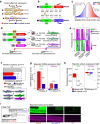Codon optimality influences homeostatic gene expression in zebrafish
- PMID: 39446991
- PMCID: PMC11631405
- DOI: 10.1093/g3journal/jkae247
Codon optimality influences homeostatic gene expression in zebrafish
Abstract
The ribosome plays a crucial role in translating mRNA into protein; however, the genetic code extends beyond merely specifying amino acids. Upon translation, codons, the three-nucleotide sequences interpreted by ribosomes, have regulatory properties affecting mRNA stability, a phenomenon known as codon optimality. Codon optimality has been previously observed in vertebrates during embryogenesis, where specific codons can influence the stability and degradation rates of mRNA transcripts. In our previous work, we demonstrated that codon optimality impacts mRNA stability in human cell lines. However, the extent to which codon content influences vertebrate gene expression in vivo remained unclear. In this study, we expand on our previous findings by demonstrating that codon optimality has a robust effect on homeostatic mRNA and protein levels in whole zebrafish during normal physiological conditions. Using reporters with nearly identical nucleotide sequences but different codon compositions, all expressed from the same genomic locus, we show that codon composition can significantly influence gene expression. This study provides new insights into the regulatory roles of codon usage in vertebrate gene expression and underscores the importance of considering codon optimality in genetic and translational research. These findings have broad implications for understanding the complexities of gene regulation and could inform the design of synthetic genes and therapeutic strategies targeting mRNA stability.
Keywords: codon optimality; gene regulation; homeostasis; mRNA; translation; zebrafish.
© The Author(s) 2024. Published by Oxford University Press on behalf of The Genetics Society of America.
Conflict of interest statement
Figures

References
Grants and funding
LinkOut - more resources
Full Text Sources
